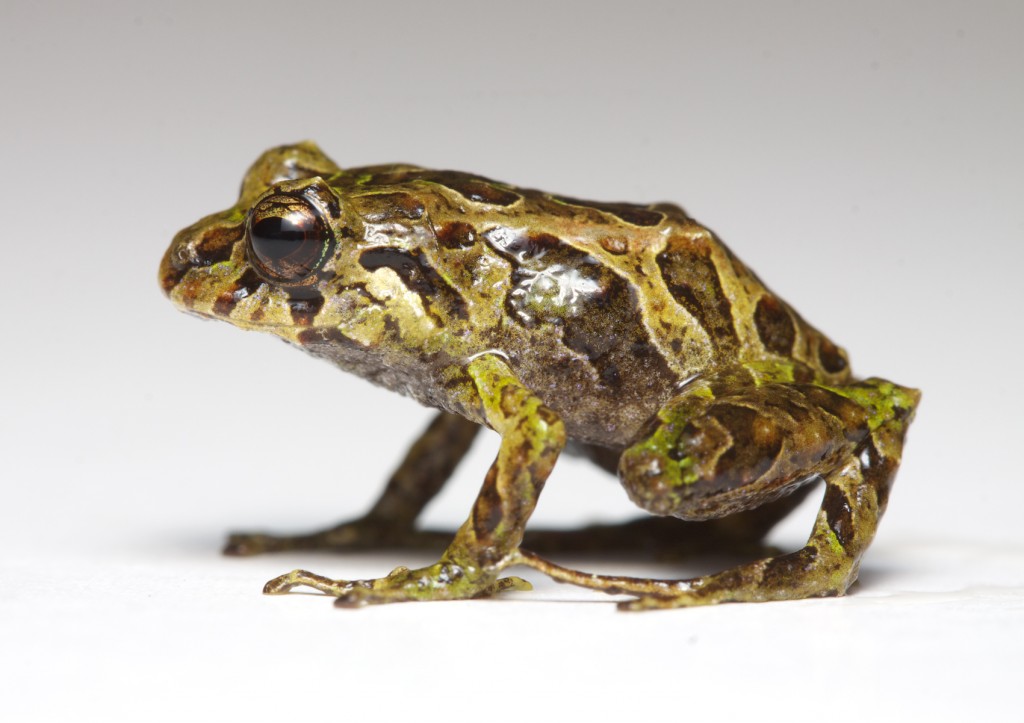Katherine and Tim Krynak are the researchers behind the discovery of frog living in Ecuador’s western Andean cloud forest and one which is said to change the texture of its skin to conform to the texture it’s sitting on. According to the researchers, this is a new species of its kind and the first vertebrate […]
Katherine and Tim Krynak are the researchers behind the discovery of frog living in Ecuador’s western Andean cloud forest and one which is said to change the texture of its skin to conform to the texture it’s sitting on.
According to the researchers, this is a new species of its kind and the first vertebrate to be discovered with such trait since this ability is more common in the mutable species of rain frog and generally in invertebrates like octopus.
The two researchers from Reserva Las Gralariasused a cup to capture their specimen and it took to the house. Come morning, they thought they had captured the wrong frog but putting it back to the cup which some moss it had it spines back.
The frog sprouts tiny spikes when around moss but the same spikes disappear when the frog is away from the moss which makes the frog’s skin turn smooth.
After analyzing the frog to understand its texture-changing ability, the researchers established that the frog which has been named Pristimantis mutabilis close to three minutes to change its skin textures. However, a relative of P. mutabilis called Prismantis sobetes was also tested and found to have the same feature.
The frog is able to blend into mossy habitats through the help of its spines and coloration. This makes it hard for the predators to identify them. However, how the change of texture helps to elude predators according to the researchers still needs to be tested.
Katherine who is a PhD student at Case Western Reserve University stated that the discovery of the new species is incredible since one would not think of anything of that kind. As such, she stressed that we should not close doors to new discoveries.
Based on the fact that two species of frogs can ominously change their appearance would have a broader implication on the identification of species. However, the researchers have stressed on the need for longer observations and photographsto ensure that one shape-changing speciesis not identifies as two species.


Leave a Reply